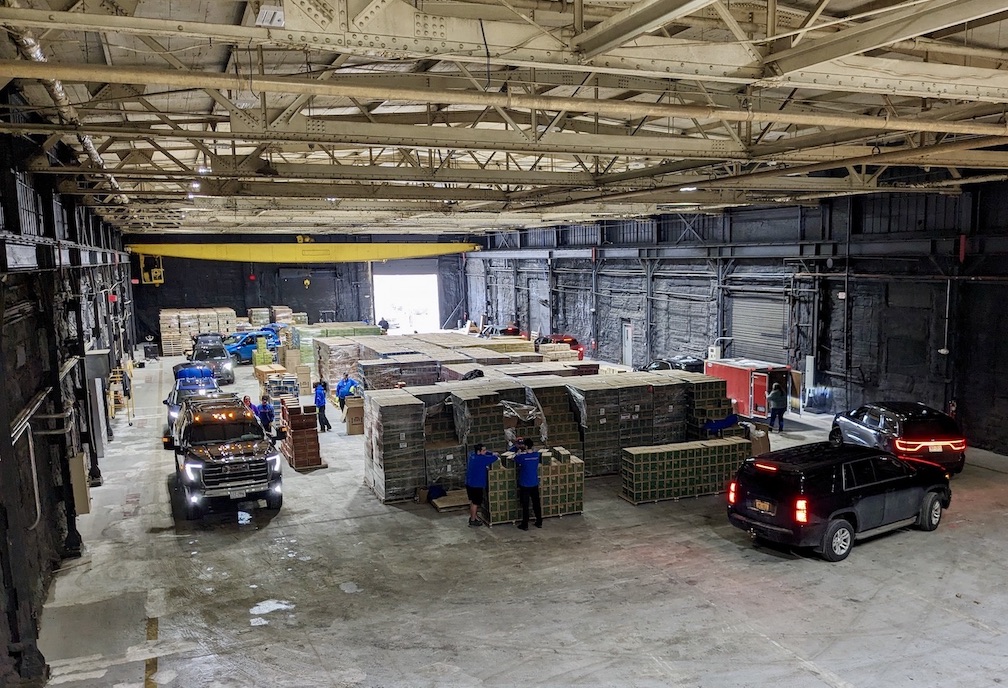Featured News - Current News - Archived News - News Categories
New York Sea Grant Extension and the Cornell University Cooperative Extension Invasive Species Program have published a New York State Watercraft Inspection Steward Program Handbook. The 81-page, illustrated guide is the standardized model for starting new watercraft inspection programs and includes a watercraft inspection steward training and field guide section.
"This new steward program development handbook is an important tool for use in fighting the running battle with aquatic invasive species," said Chuck O'Neill, New York State Invasive Species Clearinghouse director and Cornell University Extension invasive species program coordinator.
O'Neill defined aquatic invasive species, also called AIS, as non-native fish, plants and microorganisms that are likely to cause harm to the economy, environment or human health in the area where they are introduced.
The goal of watercraft inspection is to prevent and slow the spread of AIS.
"Recreational boating is a known vector by which AIS hitchhike into new waters," O'Neill said.
Invasive Species Coordination Unit Coordinator David J. Adams of the state Department of Environmental Conservation said, "Aquatic invasive species are a form of non-native, invasive biological pollution that are severely damaging New York's natural resources. Movement of AIS between waters harms our environment and economy. This new resource, the New York State Watercraft Inspection Steward Program Handbook, will encourage and support local stewardship of the waters of the state and help mitigate the impact of invasive species.'
Watercraft inspection stewards, also known as boat, lake, and watershed stewards, play a critical role in AIS management.
"The introduction of new populations of invaders is changing the ecology of lakes across New York state. By teaching boat owners the impacts of AIS and how to inspect their vessels, trailers and gear and to remove and properly dispose of aquatic hitchhikers, the stewards provide one of the first lines of defense against the damage of aquatic invasive species," O'Neill said.
New York Sea Grant has been involved with waterfront steward programs since 1985. NYSG Coastal Community Development Specialist Mary E. Penney, who has managed stewards working along Lake Ontario since 2006, authored the New York State Watercraft Inspection Steward Program Handbook.
"This handbook represents a cooperative effort built on the experience and expertise of the program leaders of existing waterfront stewardship programs in New York and others with invasive species expertise," Penney said. "Each collaborator was crucial in developing content on standardized watercraft inspection protocol, AIS identification and distribution, regulations, how to plan a new program, steward field training, and other aspects of starting a proper watercraft inspection program."
The New York State Watercraft Inspection Steward Program Handbook advisory committee working with Penney included representatives of the Adirondack Park Invasive Plant Program, Catskill Region Invasive Species Partnership, Finger Lakes Institute, Lake Champlain Basin Program, Lake Champlain Sea Grant, Lake George Association, New York Sea Grant, New York State Department of Environmental Conservation, New York State Parks, and Paul Smith's College Watershed Stewardship Program.
The clean, drain, dry watercraft inspection processes detailed in the new handbook are in keeping with the national "Stop Aquatic Hitchhikers!" campaign led by Wildlife Forever, Brooklyn Center, Minnesota, with support from the National Aquatic Nuisance Species Task Force and partners nationwide.
Stewards with two of the newest steward programs in New York, the New York State Parks boat stewards and Conesus Lake stewards, field-tested the watercraft inspection steward training and field guide section of the handbook in 2014.
Conesus Lake, due south of Rochester, is one of the smaller Finger Lakes. Cornell Cooperative Extension/CCE of Livingston County Executive Director Louie "Bo" Freeman manages the Conesus Lake stewards, a collaborative program by CCE, Conesus Lake Association, Livingston County and SUNY Geneseo.
"Training this year with Mary Penney and the steward training section of the new handbook was a tremendous asset to us," Freeman said. "The field guide is organized with readily accessible information that is pertinent to the clientele on Conesus Lake, and the comprehensive data collected will be a phenomenal resource."
New York Sea Grant and New York State Parks will hold a daylong, spring 2015 watercraft inspection steward workshop that will use the new handbook to help the organizers of new and young steward programs. The workshop planning partners include Buffalo Niagara Riverkeeper, Lake Champlain Basin Program, New York State Department of Environmental Conservation, Paul Smith's College, and Partnerships for Regional Invasive Species Management in the Adirondack Park, Finger Lakes, Catskills, St. Lawrence Eastern Lake Ontario and Western New York regions.
The New York State Watercraft Inspection Steward Program Handbook is available online at www.nyseagrant.org/articles/r/2515 and www.nyis.info.
The NYS Environmental Protection Fund, through a contract with the New York State Department of Environmental Conservation, supports the New York State Watercraft Inspection Steward Program Handbook, Cornell University invasive species program, and New York Invasive Species Clearinghouse.





























